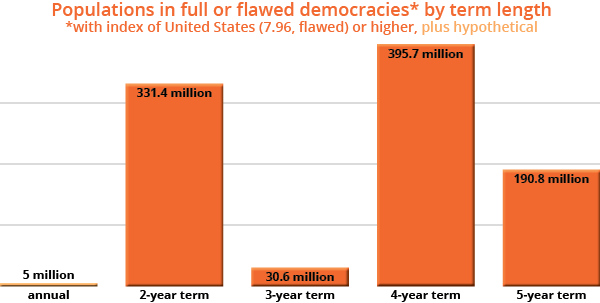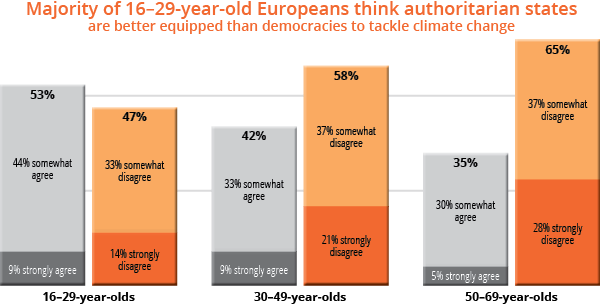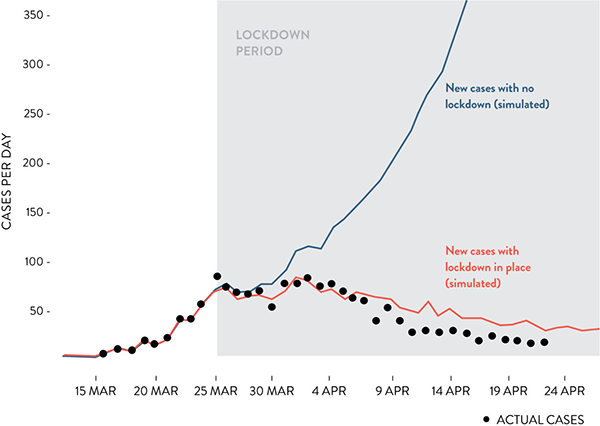25% less democracy doesn’t equate to 25% less can-kicking


No Substitute for Good Leaders: While a corrupted democracy provides a stiff head wind, no system, however perfect, can substitute for the leadership of the intelligent, knowledgeable professionals such as those who have stepped up to the challenge of responding to a pandemic with the potential to become the most deadly in more than a century, the ongoing 25–35-million-death hiv/aids pandemic not excluded. Pictured, one such hero, Professor Michael Baker. image via Radio New Zealand
Blamed for everything from the lack of climate-action mobilisation to the lack of a capital gains tax, to the failure to raise the retirement age, the three-year parliamentary term—it is persistently opined—must go.
Evidence for the efficacy of longer parliamentary terms, however, is never provided. It is apparently axiomatic that, with more time in which to introduce non-populist policies, politicians will be less wary of voter backlash. Even the earnest duo Dr Andrew Butler and Sir Geoffrey Palmer qc seem unable to summon citations to support the bald, 4-year-good-3-year-bad assertion implicit in their proposed codified constitution.
Longer parliamentary terms are famous for failing to go full-term. The United Kingdom, since the adoption of its fixed-term electoral act in 2011, has had three elections and three prime ministers, which is arguably less conducive to quality long-term governance than New Zealand’s three-year term. What is readily admitted, even by Butler and Palmer, is that democracy is more than elections. There are many promising and tested participatory long-term planning processes that could be deployed in Aotearoa, before enacting the unproven premise that holding fewer elections will improve democratic efficiency. Equally indispensably, a world-leading policy development and legislative drafting office would decouple that exacting work from electoral cycles, irrespective of their length.

Opportunity for an Outlier: Snug in the company of Australia, with its three-year parliamentary term, Aotearoa could reassert its world’s-first-full-democracy credentials by being the first country to implement the sole outstanding Chartist objective, of uncorruptible governments—by their being subject to annual elections. chart Mahurangi Magazine | data Economist Intelligence Unit
In 1967, and even more emphatically in 1990, New Zealanders voted against extending the parliamentary term. But with 56% supporting a four-year term, in a 2013 Colmar Brunton poll, elite calls for a longer parliamentary term as a panacea for political short-termism have become persistent. However, it is possible that the rise in four-year-term support reflects a disdain for party politics, and a distaste for polarising political campaigns. The distrust evident in July 2020’s polling wherein only 22% expressed trust in politiciansthose rating trust and confidence between 7 and 10 on an 11-point scale, could well be a latter-day, post-proportional-representation, plague-‘a-all-your-houses sentiment.
The oft-stated rationale for providing an extra year between elections is that a government spends the first twelve months deciding on policy, the second attempting to translate that into legislation, and the third fighting an election. A cynic might counter that any incoming government worth the ~$280 million in salary and other parliamentary expenses its members soaked up during their previous three years in opposition might be expected to have the odd bit of draft legislation shovel-ready.

Never Mind the Infection Rate, Feel the Safety: Had New Zealand’s health system not been subjected to serial attempts at privatisation by stealth, Aotearoa would have easily seen off Germany to take the top spot in the Deep Knowledge Group’s possibly not hugely robust safety assessment of 250 countries, regions and territories. Regardless, now is exactly the time that billions should be shovelled into health and housing, rather than kowtow to big business, by building more motorways to burn more fossil fuels, before and after their opening. chart Mahurangi Magazine | scores Deep Knowledge Group
But while governance structures matter, autocratic, democratic, or otherwise, worthy leaders will make any system work, as is evidenced by Prime Minister Jacinda Ardern. Most of the world’s leaders, preoccupied with the received imperative to put the economy first, abjectly failed to grasp that, long-term, there was no acceptable alternative to extinguishing the pandemic. There is no practicable alternative, as Professor Michael Baker reiterated Sunday morning before last, when asked about the worst-case scenario:

Eight and a Half Times Safer: Aotearoa missed out on the top covid-19 safety ranking spot, on account of Germany’s highest-ranked healthcare readiness—Australia’s healthcare readiness ranking was four places higher than New Zealand’s. Germany, however, with its 8.5-times-higher reported-infection-rate, was lucky for that metric, curiously, to have not been considered by the Deep Knowledge Group to be a covid-19 safety factor. graph Mahurangi Magazine | data Our World in Data – nzmoh 7 September 2020
Lest listeners’ reaction be that hearts should simply be hardened to that carnage, Professor Baker added:
Prime Minister Ardern’s Churchillian response, however, is the exception, and democracy as practiced a fifth of the way into the 21st century, is demonstrably unfit-for-purpose. Corrupted by corporate finance and increasingly fronted by unprincipled populists, the Trumpian response to covid-19 of running out the clock to the next election, whilst signalling madly to low-information investors that stock market riches are there for the taking, epitomises the ignominious decrepitude of the edifice that masquerades as democracy.
Arguably, the most egregious aspect of modern democracy is that it is blatantly wholly bought and paid for by the plutocracy. The 2016 United States presidential campaigns cost the Clinton–Trump camps a combined $1.16 billion. Even in Aotearoa, in the 2017 election year, political parties received Including a nearly $3 million government broadcasting allocation $14.5 million, which, per capita, is almost as much—more than 80% of the United States presidential campaign figure. The easiest reform, was the New Zealand Labour Party to announce a genuinely toxicity-free-moment, would be to enact George Monbiot’s self-described “brutally simple” proposal:

Paper-Towel Tosser-in-Chief: How the malignant narcissist Trump could enjoy a gross approval rating of only −8.8% is a mystery to those unaware of how deeply disillusioned Americans are with their terminally corrupt and dysfunctional Congress. Whether, by being possibly too-slick-by-half, billboards featuring the infamous paper-towel tossing, urging Floridians to never forget Trump’s shameless neglect of Puerto Rico, nor his desire to trade it in for Greenland, help push Trump down closer to George h w Bush’s −14% or Jimmy Carter’s −21.7%, two months out from losing their elections, remains to be seen. image Evan Vucci | Associated Press
However, even that reform would not ensure the party-political playing field remained level in perpetuity. An even more brutal measure was that proposed by the Chartists: annual elections. Their rationale was that, with elections held annually:
…no purse could buy a constituency (under a system of universal suffrage) in each ensuing twelve-month.
But the Chartists’ sixth objective, annual parliaments, was about more than just campaign finance; it was about prohibido olvidar:
6. Annual Parliaments, thus presenting the most effectual check to bribery and intimidation, since though a constituency might be bought once in seven years (even with the ballot), no purse could buy a constituency (under a system of universal suffrage) in each ensuing twelve-month; and since members, when elected for a year only, would not be able to defy and betray their constituents as now.

Urgent Imperative to Empower Youth: Any electoral reform that reduces the opportunity for youth to participate, such as even more prolonged parliamentary terms, is to invite a greater percentage to abdicate trust in democracy to authoritarianism. Estonia and Geneva, quelle surprise, have demonstrated that online voting pulls more younger people into the democratic process. Europeans more than 69 years of age were apparently not surveyed, but undoubtably have responded even more adamantly distrustful of authoritarians than the boomers. chart Mahurangi Magazine | data Eupinions
The evocation to prohibido olvidar—never forget—is being used on Democratic billboards to remind Floridians of Trump’s oblivious lobbing of rolls of paper towels at starving Puerto Ricans, in 2017. Whereas longer electoral terms result in hideously disruptive election-year circuses, annual elections, combined with strictly prescribed campaign financing, would likely penalise parties observed to brazenly put politicking ahead of governing.
An encouraging dynamic of the 2020 election year is the youth-led push to lower the voting age to 16. But combined with four-year term, this would mean only one 16-year-old in four would get to vote at 16. Fifteen-year-olds currently agitating for the voting age to be lowered, would have to wait until 2024, when they are 19, to cast their first votes. By the time they reached the average New Zealand life expectancy for their cohort, assuming that they’d developed the voting habit, they would have five fewer opportunities to exercise their franchise. But that is not the worst of it. Robust research shows that turnout is highest when young people can vote immediately after being enfranchised, and then falls away.

Better Opposition Better Democracy: Treated as imbeciles who can’t see through the muck of opposition self-interest rhetoric in a second, with less-braindead, battle-hardened online voting systems available now, New Zealanders should be able to vote for their choice of health minister, regardless of their party vote. This would have ensured that Labour had a halfway credible person in the role long since, and Dr Ayesha Verrall on the 2020 ticket, in that role. While Dr Shane Reti, pictured, is living, acting proof that good leaders can prevail despite the deficiencies and corruption of an electoral system, his elevation to health spokesperson should not have had to depend on the one inadvertently constructive thing Judith Collins has done since grasping her poisoned chalice. image Justin Giovannetti | The Spinoff
With the very survivability of climate at stake, it is essential that young people are represented in parliament by their peers. While non-democratic futures are conceivable and possible—one of the world’s two most populous countries, the ascending superpower China, is determinedly single-party autocratic—for civilisation to forsake democracy now rather than radically reform it, in the hope of benign authoritarianism, would be a preposterous gamble of unprecedented proportions. It would be more dangerous for humanity, collectively, than proposing “let’s give this Third Reich malarkey another lash!”
In 164 years of elections, Aotearoa has held them, on average, every three years, one month—what with the First World War government running for five long years. Rather than knee-jerk into a four-year term now, less arbitrary, tested measures should be adopted to address the long-term planning that no country, democratic or nay, has demonstrated consistent prowess with. Climate can-kicking by lifetime ruling autocrats—China’s nationally determined climate action contributions are rated “Highly Insufficient”—is every bit as prevalent as it is by leaders subject to election cycles, regardless of length. The constructive, democratically spirited way to break New Zealand’s disruptive three-year electoral circus is to introduce annual, online voting. Youth, there is every reason to believe, will not have the patience or perversity to prevaricate on climate-action mobilisation until climate becomes unliveable for billions.
An effective ban on old blokes in utes erecting billboards, every three—or heaven-preserve democracy from its terminal, accelerating, disengagement from youth, four—years!
Achilles’ Heel of current strategies The following are the two concluding paragraphs of Asymptomatic Transmission, the Achilles’ Heel of Current Strategies to Control Covid-19, published 28 May 2020:
Ultimately, the rapid spread of Covid-19 across the United States and the globe, the clear evidence of SARS-CoV-2 transmission from asymptomatic personsArons MM, Hatfield KM, Reddy SC, et al. Presymptomatic SARS-CoV-2 infections and transmission in a skilled nursing facility. N Engl J Med. DOI: 10.1056/NEJMoa2008457, and the eventual need to relax current social distancing practices argue for broadened SARS-CoV-2 testing to include asymptomatic persons in prioritized settings. These factors also support the case for the general public to use face masks when in crowded outdoor or indoor spaces. This unprecedented pandemic calls for unprecedented measures to achieve its ultimate defeat.

Becoming Wise Before the Event: Despite now experiencing 17 pandemics—and 6 of those since 2002—the world was found to be pitifully ill-prepared for when, with predictable unpredictability, this current pandemic manifested. Preparing for the potentially far-deadlier effects of anthropogenic global heating, as well as being an inescapable existential imperative, can, simultaneously, better equip humanity to respond to epidemics, and prevent more becoming pandemics. Here, the initially all-but-imperceptible case-infection rates displayed for India and Indonesia were grave indicators of governments in desperate denial of their countries’ now-destined roles in the raging pandemic—and early exemplar Singapore demonstrates the ruinous consequences of neglecting its most vulnerable workers. Nigeria, however, scams all 207 million of its citizens, by testing fewer than 1% of them, thus hiding the appalling impact of the pandemic there. Australia long-since lost her battle to keep within cooee of covid-19-test-kit-exporter extraordinaire South Korea’s standout response. Aotearoa, meantime, has flat-lined in a good way. All countries’ infection rates are under-reported, some because a few cases, particularly early in the pandemic, are misdiagnosed, but in other countries monstrously, due to dysfunction and/or lack of transparency. The diameter of each line on this graph is proportional to the country’s population. graph Mahurangi Magazine | data Our World in Data 12 November 2020
Join FluTracking now and help prevent future pandemics…
Salutary Lesson in Seasonal Influenza: Physical distancing has also paid dividends in reducing the annual toll extracted by flu that, despite its deadliness, is treated as an inconvenience rather than the killer it is, particularly of the very young, the elderly, and the pregnant—“On average, approximately 400 deaths are attributed to influenza and its complications annually.” covid-19 provided the opportunity to begin collecting flu-symptom data earlier than was done 2018–2019. graph Department of Health Australia | Ministry of Health Aotearoa | labels Mahurangi Magazine

New Zealand’s Altered Future: Moving nine days faster than Ireland, and more emphatically physically distancing, Aotearoa has avoided Ireland’s near vertical trajectory—until the middle of May—of reported covid-19 cases. Ireland’s prime minister then donning his sweats was perhaps great optics, but responding to, for example, fellow general practitioner Dr Marcus de Brun, or to nursing-home representatives more than seven weeks earlier, would have constituted a far more heroic course of action. Aotearoa, for its own survival, now needs to convince the world to alter its determinedly fossil-fuelled future. chart New Zealand Geographic | Te Pūnaha Matatini
